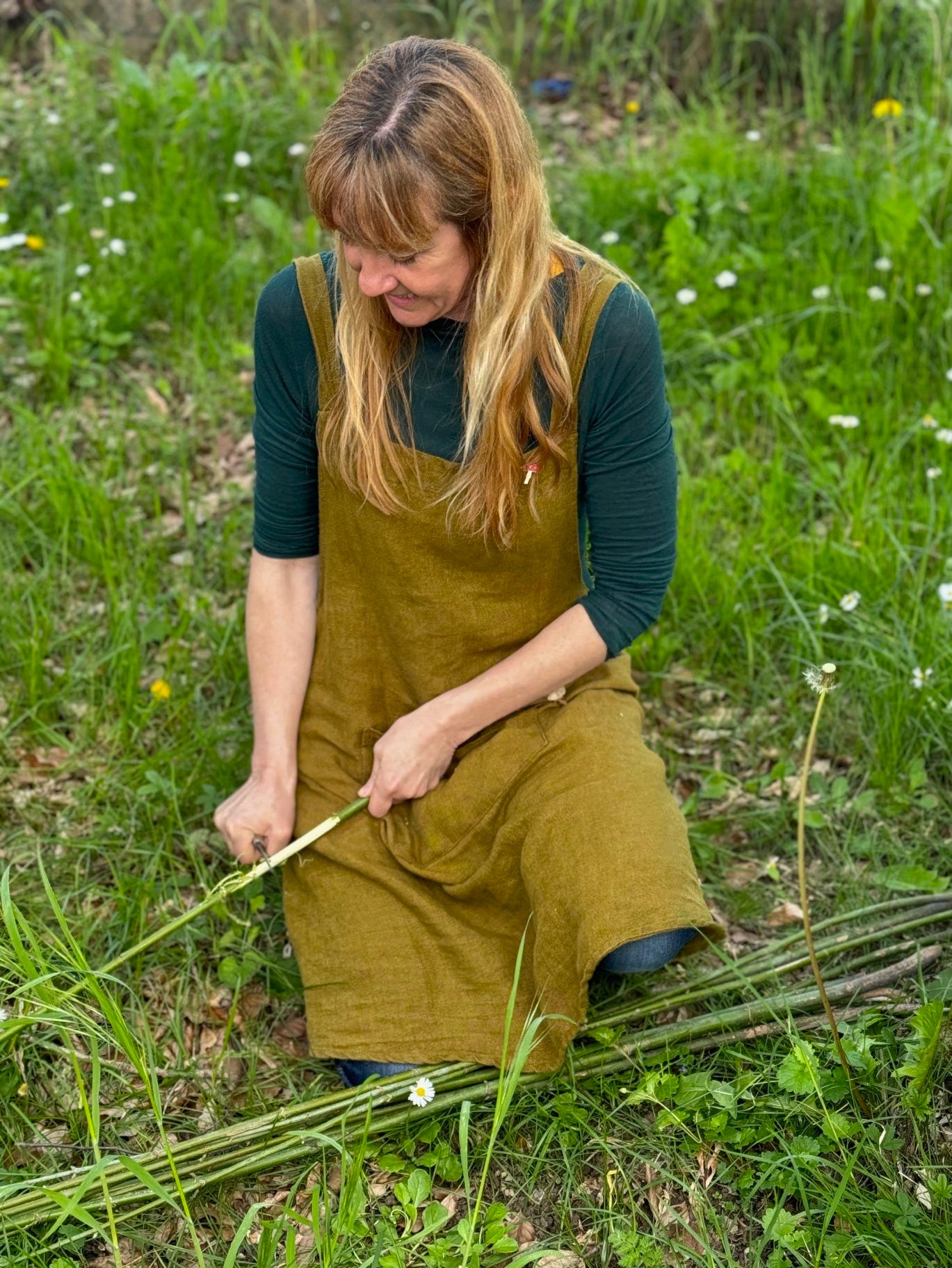
Have you had your 5-a-day?
On 23rd March 20031, the UK Government, following on from WHO advice, began a new programme to encourage people to eat more fruit and vegetables to improve their health. I remember the relative success of the campaign and the fact that over 20 years later everyone still seems to know what is meant by ‘five a day’ is a testament to this.2 Not everyone agrees the advice is perfect, some saying far more portions a day are needed, others, that it is an instance of the interfering ‘Nanny State’3. There have been riffs and spoofs on the theme, including Chocolate Orange as part of your allowance. National associations for grains were also getting in on it with ‘3 a day’ advice a few years ago, (despite the fact humans only very recently started eating farmed grains at all in our evolution, and do not need to eat them, in the strict sense, at all.)
Well, I am going to jump on the bandwagon, too, only a few decades late. I want to talk about something I think is related to the noted decline in reading books, in arts and humanities education, in engagement in face-to-face relationships and in what my friend Paul calls The Machine.
Every six months or so, inspired by thoughtful writing by Ruth Gaskovski , I end up writing a tactile / haptic response or addendum to something rich from School of the Unconformed. In this case Architecture for the Free Mind was the prompt and my desire is to add a little detail to a possible materiality for a free life. I contributed some snaps of my studio areas, full of unmade objects and hand-worked natural materials. For me, these are a source of something almost akin to a vitamin; I receive something lifegiving and nourishing when I work with or use these things.
Much is being written4 about Ultra Processed Foods (UPFs) being a feature of the modern urban diet almost worldwide, causing illness and disease. While I am not here to argue that spending up to 18 hours a day swiping almost frictionless screens or pressing plastic buttons is going to give you heart disease or directly cause obesity, I am suggesting that it is unhealthy, and related to the narrowing of simple, natural dietary and behavioural choices available around here lately.5
Not just ‘touch grass’
For my sins, I am also on Instagram, as being a visual artist and arts teacher, that is still a very sensible place to let people know about my books, classes and courses, as well as showing the beauty of the materials of Earth I want to share. The meme ‘touch grass’ is pervasive, both as a tragic expression of just how alienated from nature people really feel, and as an only somewhat ironic cry from a generation stuck to their screens for most of their day, to ask other similar people to calm down about something.6
I have taught art, craft and hands-on T’ai Chi for over three decades now and have seen hundreds of people awaken to touch in a myriad of ways in classes, whether though new-found dexterity, the joy of feeling uniquely shaped or textured natural materials, or the deep pleasure and connection found in sticking hands and other gentle T’ai Chi partner work. It has happened too many times for me to think it’s a fluke: people literally waking up to parts of their bodies they had ignored for years. After being asked to feel the subtle transfer of weight, and even the sensation of socks against the soles of their feet, a new T’ai Chi student in 2006 once tearfully told me he hadn’t thought of his feet or really felt them properly since childhood. Similarly, countless art materials students have found the softly friable properties of ochres, the unctuous flow of gum Arabic and the careful rolling of dough-like pigment pastels to be a sensual awakening. It is quite common for students to momentarily express some sadness that their tactile lives had been somewhat lacking before the knowledge kicks in that they can now literally take the matter in hand.
Everything We Touch
Months ago, my partner told me about a book based on a project by Paula Zuccotti called Everything We Touch, where she documented every item that a selection of people touched in a day. The project came together during lockdown, when almost all our worlds reduced in scale to the domestic, unless we were thrust out into the changed world as ‘key-workers’. I’ve been thinking, teaching and writing about what people touch for many years and finally, looking through the book’s website today, I realised with a start how similarly-produced were so many of the items in the photographs, despite the vast geographical distances between the participants. Some of this is surely down to who was chosen and which day was selected for the project; a Saami reindeer herder during migration season would have a very different set of touched objects than on a day spent cooking at home and taking their young child to kindergarten; vastly different again from a San bushman on a hunting trip, in Africa. But whether in Dubai, London, or Buenos Aires, urban modern people largely have the same mass-produced plastic-heavy belongings, even the prayer rugs of Dubai are the same acrylic ones sold in Tooting, south London, last week.
The two stand-out features for me were Liu (72) from Shanghai7 and David True (23) cowboy from Tucson. Mr Liu had made many of the items he used daily and this resonated deeply with me. In his selection, the variety of shapes, types of object, material, method of making and surface texture were much more varied than in all but the cowboy’s flat-lay. Mr True’s leather saddle is a thing of working beauty, and I zoomed in to look at it’s complex system of straps and buckles.
Think for a moment of plastic, silicone, polyester and machined glass as Ultra Processed Foods of our tactile diet. This keypad I am typing on is textured grey plastic, the phone beside me with a timer on it is mainly sleek glass and shiny metal. All of these are machine made, of artificial or composite materials. But beside me, newly emptied of coffee, is a ceramic mug. I picked up the plain white mass-produced one rather than the lovely Findhorn Pottery hand thrown stoneware one by Brian Knowles, because it was at the front of the shelf. The mat this laptop sits on is natural cork, but machine produced and entirely even-textured. The only things I have touched today that are purely natural materials are the wooden scoop and spoon I carved, with which I measure out my oats and muesli ingredients. As today so far I haven’t made any pigments, nor walked on the beach, I hadn’t touched an entirely natural, unfabricated object all day, until I picked up the large acorn from my altar, that’s in my left hand now. At last, something unmade.
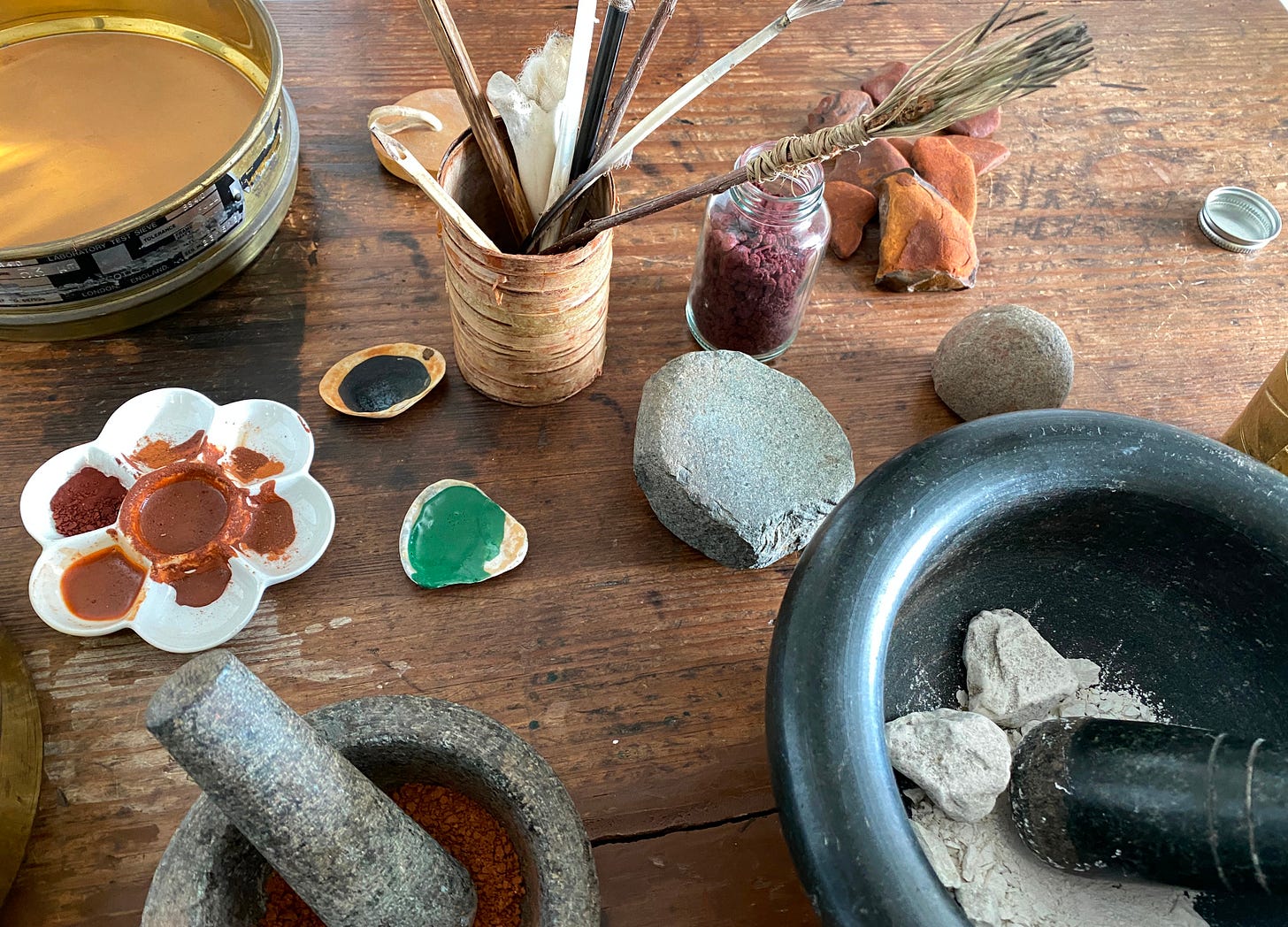
A hand the size of the Earth
I was once told that if a human hand were scaled up to the size of the Earth, and if the giant fingers were arrayed with nerve endings in proportion to the sensitivity of our own, that if it gently passed across my town, it would feel the difference in texture between the slate rooftops and the ones made of terra cotta tiles.
I am not online to berate people, nor to self-flagellate. I do like to ask myself tricky questions, however, and wonder aloud about things. In paying very close attention to genuinely important things, such as dietary nutrition and digital media intake, let us not forget the other contexts where our choices and senses are being narrowed, such as has been shown with sound production and music, as well as with colour and touch.
My mum, who’s in her eighties, likes to have everything wipe-clean. For her, scrubbing the mould off wooden draining boards and polishing brass coal buckets and tile front steps was endless drudge-work, and modern materials with their uniform smooth surfaces made her housework easier and quicker. I can sympathise. Nothing I make with wood, rock, fabric or foraged foods gets done quickly, and if I were to think of those hours in terms of lost payment, even at the national minimum wage, I’d go mad at their ridiculous cost.
Yet our ancestors, even my Nan on an Aberdeenshire farm, had far more variation in the qualities, surfaces and textures of the vernacular things they touched, in objects, in foods and in clothing. Often, the particular qualities of the things would be known and sought out.8 Unless they were very rich, in which case roughness was usually abolished, and smoothness reigned. I wonder what subtle mischief this absence from the haptic diet of fingertip-roughage has done to the ruling classes since surplus, hoarding wealth and agriculture so violently skewed our tending of this garden Earth. Perhaps it is part of the ongoing madness of the kleptocracy.
The World at Your Fingertips
One day this month I am going to write down everything I touch and look at it from the point of view of the list I am going to share below. Many people on here over Lent were making an honest audit of their digital device and screen use, and seeing if it served them and their households, or whether they were slaves to The Pull, as Peter Limberg deftly named it. Some engaged in a digital fast, others, like me, tried some new habits that didn’t involve devices.9 I want to see how much of my tactile life is still taken up with Ultra Processed Things, how much I touch the naturally varied surfaces of hand made and unmade things, and where the balance of ease vs beauty and thoughtlessness vs care lies. On some days, when teaching, for instance, my hands can be on soil, gums, rocks, feathers, sticks, shells and cotton rags for most of a day. Today, the mushrooms and eggs for my dinner in a moment will be the nearest I get to handling Creation, rather than fabrication.
Toddlers are encouraged to use sand pits, water play, wooden bricks, sewing cards and more, so that they gain dexterity and fine motor control. We know these skills are falling away, even the Royal College of Surgeons sounded the alarm. It is different to mindfully engage in joy-of-fingertips as an adult, but I would be interested to see what delights, frustrations or other feelings arise for those of you who join this audit of everything we touch for a day. Will you get your long-abandoned knitting back out? Will you dig up the weeds in the path with a hand fork? Will you make the pastry by hand, letting the flour go through your fingers as you rub in the butter? Would you consider joining in this inquiry with me?
Here is the list which has been haunting my head for a few months, pertaining to the materiality, not just the ‘object type’. It’s not about where it came from, in this instance, for example, the apple might be from a neighbour’s yard, or from the other side of the world, it’s the ‘made-ness’ of it I am interested in here, and by extension, the tactile and textural qualities of it. I use ‘unmade’ rather than ‘natural’, as this is more helpful given the qualities we are stalking here. I have added examples to make it clearer, but you will think of your own.
1 Entirely unmade - acorn, seashell, stick, apple, rose, hair, cat10, leaf, flint, soil, puddle
2 Unmade, but modified - ground coffee, stone paperweight, wooden walking stick, dried apple rings, raisins, a fallen log to sit on
3 Hand made, but unmade materials source - wooden scoop, veg tan leather belt, nettle dress, ochre pigment, silver earring, clay figurine, pewter pendant, silk shawl, wedding ring
4 Machine made, unmade materials source - wooden table, iron railings, cotton dress, pestle and mortar, bread board, soap
5 Machine made, artificial or mixed source materials - phone, mattress, laptop, toilet, fridge, pen, book, running shoes, shower head
I am using this to make me think a little more carefully about what I touch, what I need, what my ancestors used and needed, and what I have used when in the outdoors in ‘bushcraft’ situations, where improvising from what was around me was the norm. This also lets me think creatively, and without anxiety, about what might be useful when the supermarket shelves stop having things on them, (as my friend Adam puts it). Mainly I just want to say, let us not lose our appetite for touch! In fact, let’s enrich our fingertip diet. When I have recorded a whole day’s worth of everything I have touched, I’ll share my findings. Perhaps you will share yours.
Wishing you a tactile week ahead.
This Week’s Good Things: I was just at the launch of Matthias Olsson’s wonderful new film Radical Neighbouring about my dear friend
and the farm he is entrusted with. It’s a beautiful short film with good, uncomfortable questions in it. It is available for everyone to watch from today and I heartily recommend it. I am now also thinking about all the unmade things Adam touches in a day at Sand River Community Farm. I miss him and Maizey Corn Dog.Also, I will start teaching T’ai Chi online again in the autumn and all will be welcome to attend, wherever they are in the world. I have made a place for this online at the new Great River T’ai Chi Substack. Head over there and subscribe for free if you’d like to stay in the loop. Over the next few weeks I’ll be sending out polls to find the right time slots to best serve the people who’d like to show up each week. It will be where the links to classes are posted as well as where the recordings will be archived, it won’t be a place for writing; that lives here! As Substack now has very simple video hosting and an easy way for people to pay class subs, I felt the ad-free and familiar set up here was far better than me trying to build a stand-alone section of my T’ai Chi website, or use one of those huge educational aggregator sites. So, apologies for lateness to those who did my movement classes who asked for this a year ago, but we will start up, as soon as I am moved in up north!
If you would like to comment but cannot afford a subscription, just reply to this email and I will comp you 6 months for free.
Here’s a short history of it.
The project, like so many aspects of the Tony Blair years, did not thoroughly enough take into account socio-economic factors, for instance, so-called ‘food deserts’, but nevertheless, is still considered a qualified success.
That famous straw auntie erected solemnly and attacked viciously by almost every neoliberal millionaire I every heard speak in Parliament.
Ultra Processed People and upcoming Ultra Processed Women, for example.
Feel free to touch some grass, by the way, if that appeals. My own views on the ubiquitous and lawn-inducing influence of Colonial era British garden design are probably best left for another post, or perhaps just kept to myself. Other non-invasive, pollinator-friendly grass species are available for you to touch…
Do read the list he gives of the items.
I am thinking in particular of the touch of Harris Tweed, in contrast to the smooth green baize which used to back doors to the servant’s quarters in stately homes and houses rich enough to have staff.
I resumed a daily movement practice, went for a walk each day and also lessened my online screen time. Last year in Lent, I drew a picture a day based on a quality I felt grateful for.
A cat is obviously not an object, but it is a being we can touch, so I have included it.





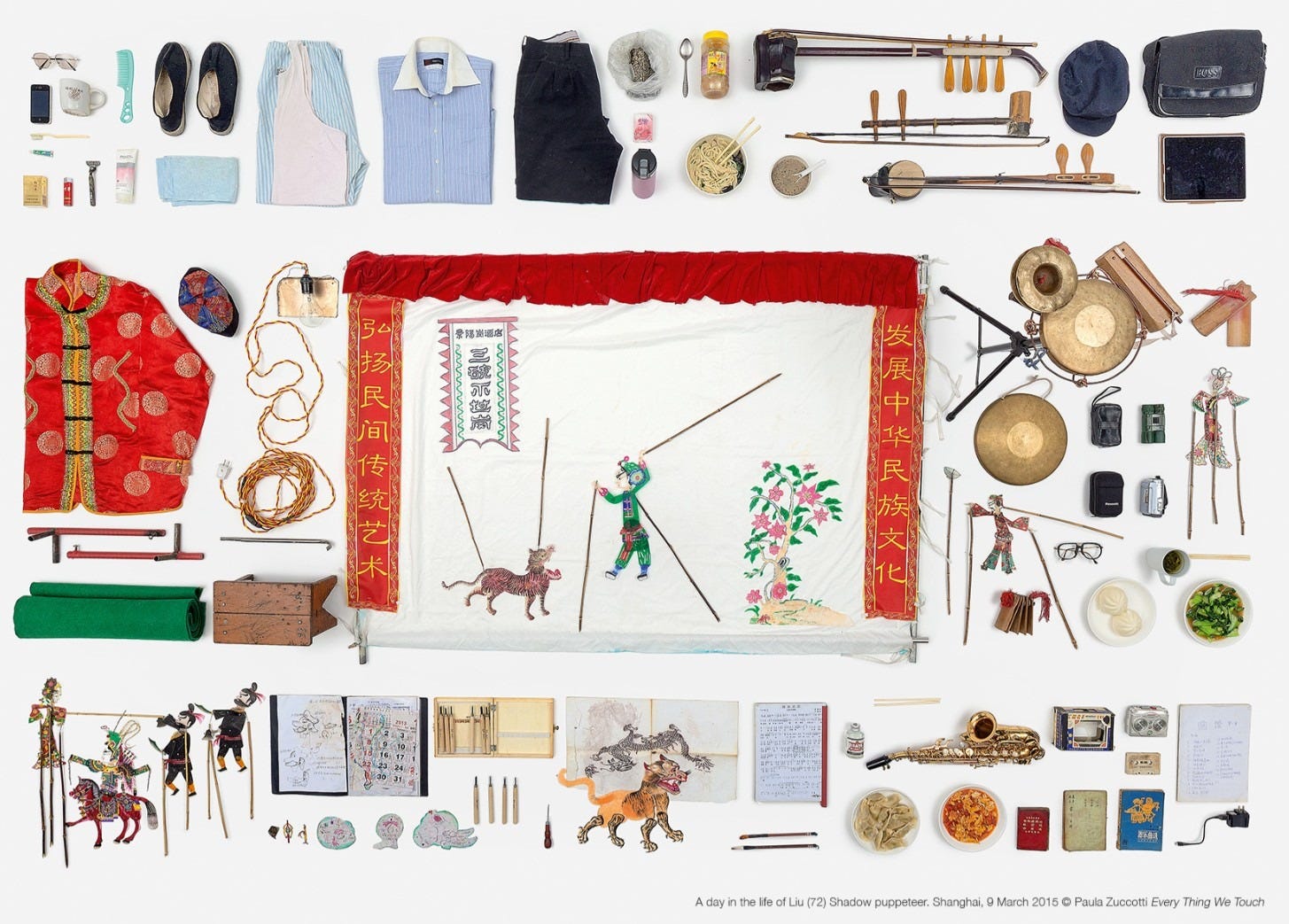

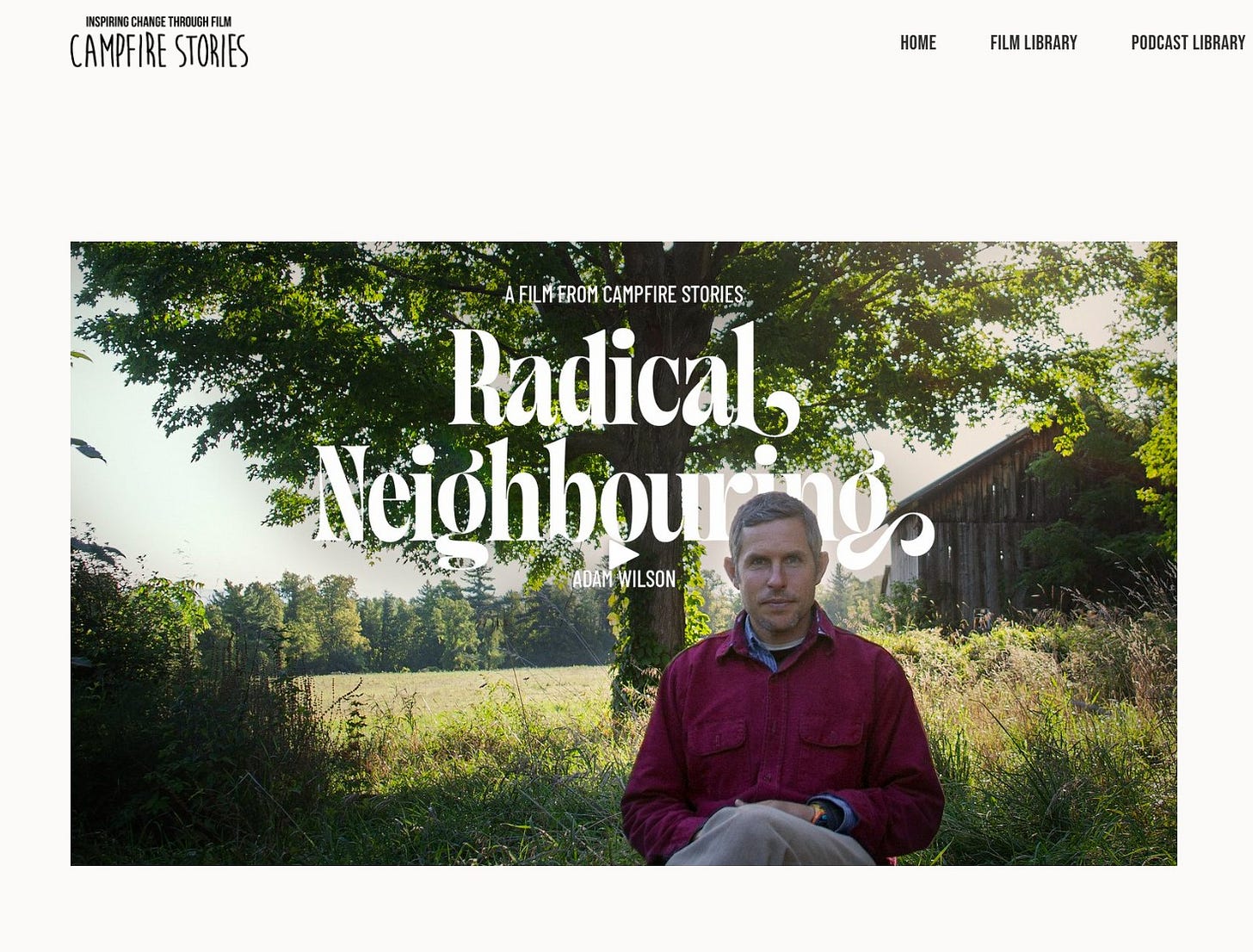
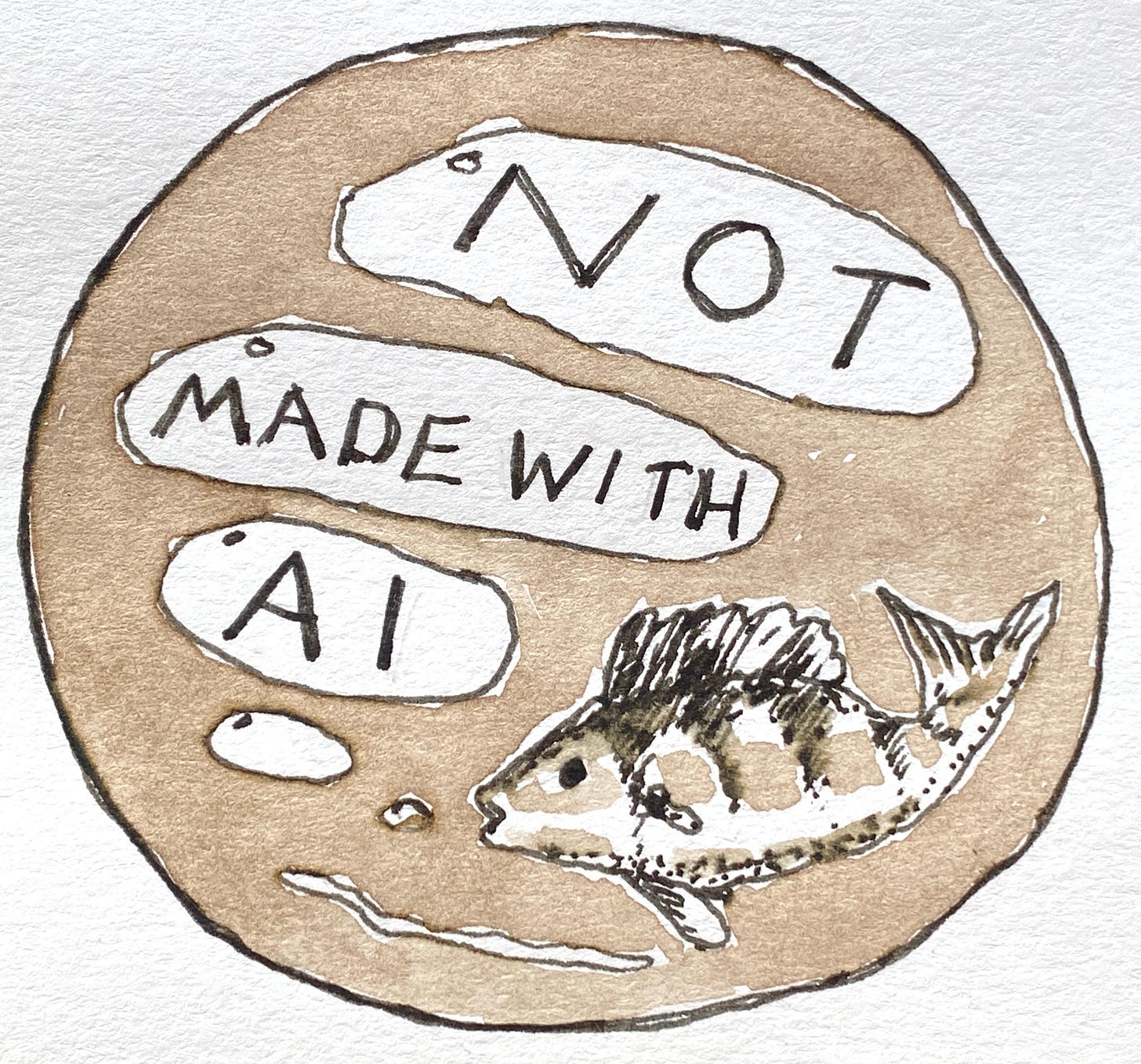
Thank you for these nourishing thoughts. I will join in the audit of things I touch in a day, I imagine it will be quite surprising. You mention your mum's appreciation of smooth, wipe-clean things: I think feminism is often left out of many discussions about the Machine and it's effects on all our lives. For working class women these amazing new things - washing machines, vacuum cleaners, drip-dry clothing, supermarkets and so on - were nothing less than a liberation from a life spent cleaning, washing, sewing, shopping and childminding. Not that any of these activities are bad, but there was little choice for women to do anything else. My auntie worked in a munitions factory during the war and she often said it was the happiest time of her life: to be working at something so important, in the company of hundreds of other women. Then she had to go back to being a housewife and she resented it deeply. So women were freed economically, to go out to work (and of course there's the whole capitalist aspect of that to consider) and earn their own money. Even if they had to put it in their husband's bank account because they couldn't have one of their own...
Back to tactility! I am going to spend today noticing how many different textures I experience and how they make me feel.
Thanks for this piece. Lots to ponder on. My artist colleaguie and I have been discussing whether there's a healthy "mental biome" and whether, like the gut biome, it depends on diversity of input. So, ahead of a visit to Iona in January, we each tried to keep a record of every sensation/stimuli we noticed - heard, felt, tatsted and smelt to see if we reached 30 different ones (as recommended for the gut biome!) .We left out visual sitimuli being aware how much they usually dominate our attention. It was easy to get to 30 and I liked the fact that I stopped and just smelt the sea, felt the wind, heard a boat's lines creaking, the 'bing bong' announcement on a CalMac ferry, the feel of walking on sand, the singing in Iona Abbey. If we have a mental biome, it certainly felt invigorated!